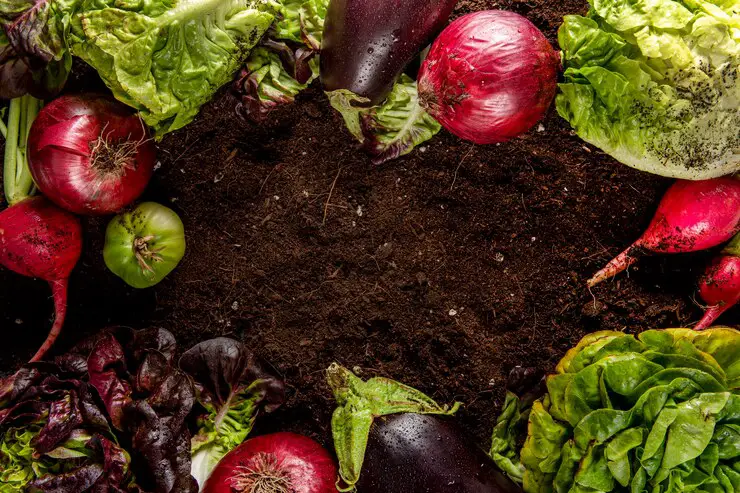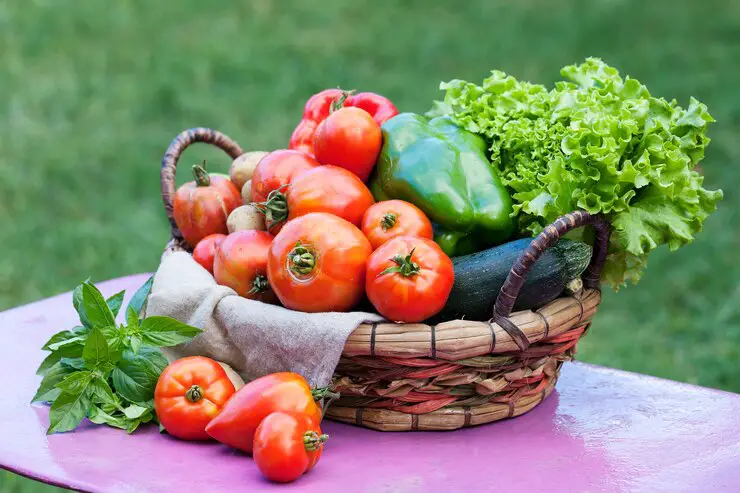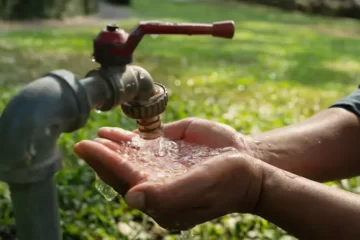Ensuring the robust growth, vitality, and visual appeal of your plants requires meticulous attention to the quality of the water. The development of plants is intricately linked to the water quality, and using water which is unsuitable for irrigation poses inherent risks of toxicity and salinity, potentially harming your plants.
An economical alternative for nurturing your plants is water rich in nutrients, specifically containing minerals like calcium and magnesium, within the pH range of 6.5 to 8.0, commonly found in well water.
In this article, we’ll explore all aspects of well water including suitability for plants, potential contaminants, and the essential steps for treatment before application.
Is Well Water Good For Vegetable Garden?
Yes, well water can be beneficial for a vegetable garden, it’s crucial to have a good understanding of the chemistry of the well water. Regularly watering plants with well water containing elevated iron levels is generally not harmful to the health of perennials, shrubs, and vegetables in common landscape settings.
This is particularly true when the soil pH registers at 7.0 (neutral) or above, leaning towards alkaline conditions. Concerns about iron toxicity become more relevant in acidic soils, and become harmful for your plant.

For a more accurate assessment, it is advisable to conduct a soil test to determine the pH level, especially if unexplained brown spots appear on your plants.
How Can Well Water Affect Plants?
Both plants and humans bear the detrimental consequences of water contaminants. Contaminated water can result in wilting and various toxicity issues in plants. Well water may contain hazardous substances like iron, magnesium, and calcium, posing a serious threat to the well-being of your plants.

Understanding and addressing these potential issues is crucial for maintaining a healthy and thriving garden.
High Ratio of Nitrates
Residing near a ranch or farm may result in elevated nitrate levels in your well water. Research from Penn State University has highlighted the risk of over-fertilization due to excessive nitrate exposure to plants.
The presence of excessive nitrates in water can foster algae growth, adversely affecting the overall health and development of plants.
1. Excessive Calcium
In cases where well water consistently interacts with calcium carbonate (limestone), there is a consequential increase in the water’s calcium levels, directly impacting plant growth. The excessive presence of calcium alters the water’s pH, making it more alkaline.
Moreover, elevated calcium levels can impede seed germination and reduce the overall rate of plant growth.
2. Large Amount of Iron
In some cases, well water may become contaminated due to an excess of iron, especially in deep wells. Prolonged contact between well water and underground rocks contributes to elevated levels of iron.
The excessive intake of iron in a plant’s diet can have adverse effects on chlorophyll, leading to dis coloured, bronzed foliage and stunted growth.
3. High Salt Concentration
An elevated salt concentration impedes the plant’s ability to absorb water and crucial nutrients, leading to sub optimal growth. It is crucial to bear in mind that an excess of anything, including salt in plants, can pose a threat.
The accumulation of excessive salt can induce “saltstress” in plants, inhibiting growth and, in prolonged exposure, potentially causing death.
4. Hardness
Water with elevated concentrations of calcium (Ca) and magnesium (Mg) is referred to as hard water. The presence of hard water diminishes a plant’s ability to absorb a sufficient amount of nutrients essential for optimal growth.
Benefit of Using Well Water on Vegetables
The utilization of well water for plant irrigation offers various advantages, contingent upon the quality of the well water and the specific requirements of the plants in question.

Some potential benefits include:
1. Mineral Content
Well water often contains essential minerals such as calcium, magnesium, and potassium. These minerals play a crucial role in supporting plant growth and development by facilitating nutrient absorption, promoting photosynthesis, and enhancing overall plant health.
2. Chemical Absence
Well water typically lacks chlorine and other chemicals commonly found in municipal water supplies. Plants, sensitive to certain chemicals, may experience reduced stress when irrigated with well water, mitigating potential adverse effects.
3. Reliable Water Source
A well with a dependable and steady water supply ensures a consistent provision of water for plants. Maintaining a regular irrigation schedule is crucial for promoting optimal plant growth, as fluctuations in water availability can induce stress in plants.
4. Suitable pH
Well water proves advantageous, particularly for crops like sweet potatoes and radishes. These vegetables thrive in soil with a pH range of 5.5-6.5, and well water can contribute to maintaining the ideal soil pH for their healthy growth.
5. Beneficial Microorganism
Well water is rich in beneficial microorganisms, which not only pose no threat to plant growth and functionality but also actively contribute to the overall health of the plant.
Drawbacks of Well Water on Vegetables
While well water can offer numerous advantages for plants, it’s essential to acknowledge potential drawbacks. These disadvantages may vary based on the distinctive traits of the well water and the specific plants undergoing irrigation.
Here are some prevalent concerns:
1. Potential Contamination
Well water carries the risk of containing contaminants such as bacteria, fungi, pesticides, or heavy metals. These impurities in the water have the potential to impede plant growth, induce diseases, and even pose health risks if the plants are consumed.
2. Variable Quality
Well water quality is susceptible to fluctuations influenced by factors such as seasonal changes, weather conditions, and water table levels. Inconsistencies in water quality pose challenges in sustaining optimal growing conditions for plants.
3. Treatment Expenses
Well water might require treatment to enhance its suitability for plant irrigation. Methods such as filtration, pH adjustment, or the introduction of specific nutrients can incur additional expenses.
Purifying Well Water
Various methods exist to test and purify your well water:
1. Purification Kit
A simple way to conduct personality tests and purify well water. Home kits, available online or in supermarkets, offer a convenient option. By following the instructions within the kit, individuals can assess and improve the quality of their well water.
2. Lab Test
A straightforward method involves seeking assistance from a local test lab. By contacting a nearby lab, professionals can visit your location, conduct essential tests, and provide comprehensive results. This ensures a thorough examination and purification process for your well water.
3. Health Department
Another avenue is to consult the local county health department or the United States Environmental Protection Agency (EPA) for testing and purification services. They can undertake the task on your behalf, ensuring a reliable and authoritative assessment of your well water quality.
4. Reverse Osmosis
An accessible technique involves employing a Reverse Osmosis (RO) filter for testing and purifying contaminated water. This system utilizes a semi-permeable membrane to eliminate undesirable and harmful particles, such as contaminants and sediments, rendering the water safe for use.
The RO system operates by pushing water through membranes to eradicate unseen pollutants that are not seen by the naked eye.
Conclusion
The quality of well water plays a crucial role in determining the growth and vitality of plants in a garden. While well water enriched with essential minerals can be beneficial for plant development, potential contaminants like nitrates, calcium, iron, high salt concentration, and hardness may present risks.
Regular soil tests are advisable to assess pH levels and identify potential issues. Well water brings advantages, including mineral content, the absence of certain chemicals, reliability as a water source, and the presence of beneficial microorganisms.
However, drawbacks include contamination risks, variable water quality, and potential expenses for treatments. Various purification methods, ranging from home kits and lab tests to seeking assistance from health departments or utilizing reverse osmosis, can be employed to ensure the suitability of well water for plant irrigation.
FAQs
Is well water safe for vegetable gardens?
In general, well water is safe for vegetable gardens. However, it’s crucial to test the water for contaminants like excessive minerals or harmful substances. Regular testing ensures the water meets the specific needs of your vegetables.
What minerals are commonly found in well water for gardening?
Well water may contain minerals like calcium, magnesium, and iron. While these are essential for plant growth, excessive levels can harm plants. Testing helps determine the mineral content and whether adjustments are needed.
How often should I test my well water for vegetable gardening?
Test your well water at least once a year for basic parameters like pH and mineral content. If you notice changes in plant health or water quality, more frequent testing may be necessary.
Can well water be too alkaline or acidic for vegetable gardens?
Yes, both extreme acidity and alkalinity can affect plant growth. Testing the pH of well water is essential. Most vegetables prefer a slightly acidic to neutral pH range (6.0-7.0).
Is it necessary to treat well water for bacteria in vegetable gardens?
If your well water is contaminated with bacteria, it can pose a risk to both plants and human health. Treatment methods may include chlorination or ultra violetsterilization.





